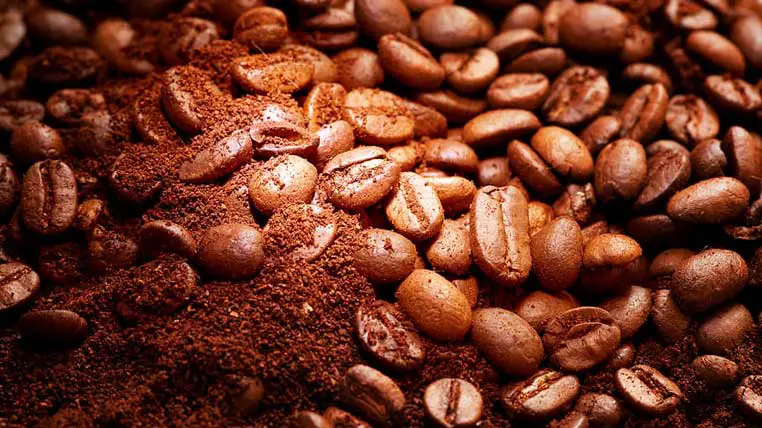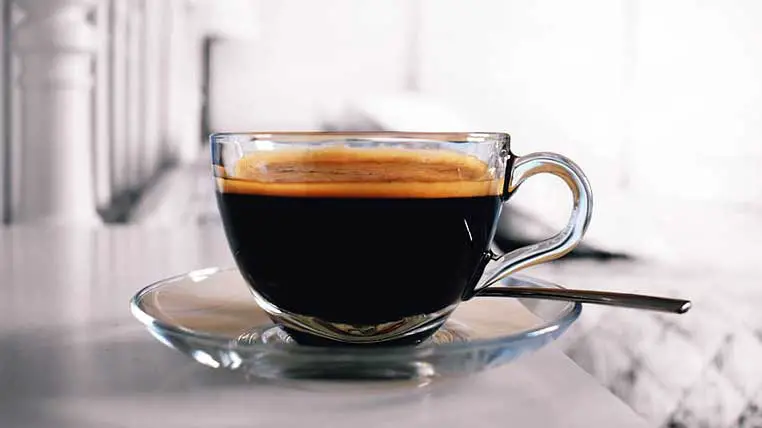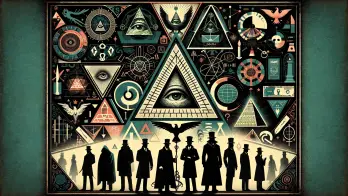Among the world’sworld’s most popular beverages, coffee has a more storied history than tea or hot chocolate. It fueled revolutions, made some rich and others poor, and transformed religious practices.
Coffee is a drink obtained from roasted and ground beans. It has a black color and contains an energizing substance called caffeine.
The excellent drink is prepared from the fruits of trees or bushes from the Rubiaceae family, with two more important varieties: arabica and robusta.
A short history
Its history is as rich as the drink itself, dating back over 1,000 years.
In the West, the energy drink was only known and widely accepted around the year 1600 when Pope Clement VIII called it a “Christian drink,” but in the Middle East, it has been consumed by all social strata since ancient times.
From recorded sources, the first reference to coffee dates back to the 9th century, although there were many Arabic legends about the mysterious and bitter drink centuries before.
Its amazing history begins in Ethiopia, Koffe, where it was first introduced to the Arab world via Egypt and Yemen, where it was cultivated for commercial purposes.

In the past, it was considered food and not a drink. The East African tribes ground the raw grains, mixed them with animal fat, and consumed the resulting paste for more energy during battles.
Starting from 1000, the famous healer Avicenna administered it as medicine.
The Ethiopians obtained a kind of wine from its fruit by fermenting the dried beans in water.
Due to its stimulating properties, the drink gained a mystical reputation, shrouded in mystery and associated with doctors and priests. It is, therefore, not surprising that legends have emerged to explain the discovery of the magical coffee bean.
It is said that around the year 1400, a goat herder in the region of Yemen named Khaldi noticed how his goats became energetic and restless after eating the red berries that grew in the bushes of those lands.
Very surprised, he decided to taste those apples too. Not long after, Khaldi felt less tired and more energetic.
Khaldi picked some fruits and took them to a nearby monastery where the monks boiled the berries in water to obtain a bitter but aromatic and highly stimulating liquid that banished their fatigue and drowsiness.
Since then, monks have started using its beans to stay awake during long meditations and prayers, waiting for divine inspiration.
Another legend related to coffee beans is that of a Muslim dervish who was condemned by his enemies to wander through the desert and thus die of hunger, together with his friends.
Walking through the desert and having nothing to eat, they were forced to feed on the shrub berries. They also used some of the berries to make soup.
These grains overcame their fatigue and gave them the strength to reach the city of Moch. Glad to have escaped alive, they named the plant and its beans Mocha.

Coffee takes the world by storm
The first drink that contained coffee was wine made by fermenting the beans, water, and honey. By the way, the word “coffee” originates in the old Arabic term “qahwah,” meaning wine.
In 1475, the first coffee shop in Constantinople was called Kiva Han. Due to the stimulating effects of the amazing drink, the imams of the Arab world forbade its consumption for Muslims, but nevertheless, the first such shop was opened in Damascus in 1530.
From the Middle East, the drink spread to Indonesia and America, India, and then to Italy, with the help of trade between merchants from Venice and those from North Africa and Egypt.
After 1600 it was introduced to the rest of Europe and widely accepted when Pope Clement VII called it a “Christian drink.”
Coffee was brought to Great Britain by traders who carried goods from Turkey. In 1652, the Grand Cafe opened in London, and in 1654, in Oxford, the Queen’s Lane Cafe. It still operates today.
Interesting read: Weird Guinness Records You’ve Never Heard Of: Top 15 List!
By 1675, over 3,000 coffeehouses had opened throughout England.
The first to import the product at an industrial level were the Dutch. They cultivated it in their colonies in Ceylon and Java and introduced it to Japan. After the Dutch and the French began the cultivation of the plant in the Antilles and Martinique.
After the year 1700, the drink reached the two Americas, and in 1773 it was proclaimed the national drink of the United States of America, becoming a favorite choice of millions of Americans for breakfast.
Brazil began cultivating coffee in 1727, and the plant quickly became one of the country’s primary economic resources.
An American company, Hills Bros., based in San Francisco, began in 1900 to package roasted and ground coffee in vacuum bags.
The first soluble variant was obtained in New Zealand in 1890 by David Strang and two years later by Satori Kato, a Japanese chemist.
Today, more than 80 varieties of coffee are known. The most popular varieties include arabica, robusta, liberica, excelsa, and catimor:
- Arabica is the most popular, accounting for 60-70% of the world’s total production;
- Robusta is a more bitter, higher caffeine variety often used in espresso blends;
- Liberica is a rare variety grown in Southeast Asia and has a unique flavor profile;
- Excelsa is a variety found in Africa and Asia and has a sweet, fruity flavor.
Catimor, a hybrid variety developed in Portugal, is known for its intense flavor and high caffeine content.
As an essential commodity for producers and consumers, it is consumed in almost every country.
After oil, coffee ranks second in the world market, and the economic situation of many coffee-producing countries depends almost entirely on its export.
The most important coffee markets are in London and New York.
Coffee, the most requested drink at breakfast, makes our mornings brighter and, thanks to caffeine, sets our minds and bodies in motion. But most of us have yet to learn that it was discovered by accident or that its consumption was forbidden in the 16th century.
Among the world’sworld’s most popular beverages, coffee has a more storied history than tea or hot chocolate. It fueled revolutions, made some rich and others poor, and transformed religious practices.
Coffee is a drink obtained from roasted and ground beans. It has a black color and contains an energizing substance called caffeine.
The excellent drink is prepared from the fruits of coffee trees from the Rubiaceae family, with two more important varieties: arabica and robusta.

What are the benefits of drinking coffee?
Coffee is one of the world’s most popular beverages. It has been around for centuries and is enjoyed by millions daily.
It has many health benefits, including providing antioxidants, boosting energy levels, and helping to reduce the risk of certain diseases.
When it comes to coffee, there are two main types: roasted and green.
The roasted variant is made by roasting beans at high temperatures, and this process brings out the flavor and aroma of the beans and some of the beneficial compounds found in coffee.
The green variant, on the other hand, is made from unroasted beans, and it has a milder flavor and contains more beneficial compounds, like antioxidants.
Both roasted and green offers a variety of health benefits. Here are some of the most notable ones:
1. Antioxidants: It is rich in antioxidants, which help protect the body from damage caused by free radicals. Free radicals are molecules that can damage cells and contribute to the development of certain diseases. Drinking coffee can help reduce your risk of developing certain conditions.
2. Energy boost: It can give you an energy boost. Caffeine, the main active component, is a stimulant that can help increase alertness and focus. This can be especially beneficial for those who need an extra energy boost during the day.
3. Improved mood: It can help improve your mood. Caffeine has been shown to increase dopamine levels, a neurotransmitter that helps regulate mood, and this can help reduce feelings of depression and anxiety.
4. Reduced risk of certain diseases: It can help reduce the risk of certain conditions, such as type 2 diabetes, Parkinson’sParkinson’s disease, and Alzheimer’sAlzheimer’s disease. Studies have shown that drinking it can help reduce the risk of these diseases.
Overall, coffee is a great beverage that can provide various health benefits. Whether you prefer roasted or green, both offer a variety of health benefits – an excellent choice if you’re looking for a way to boost your energy levels, improve your mood, and reduce your risk of certain diseases.

Timeline
• 1000 CE: The drink was first discovered in Ethiopia.
• 15th Century: It was introduced to the Arabian Peninsula.
• 16th Century: It was introduced to Europe.
• 1675: The first coffeehouse opened in England.
• 17th Century: It was introduced to the Americas.
• 1773: The Boston Tea Party was held, leading to increased coffee consumption in the United States.
• 1822: The first espresso machine was invented in France.
• 1885: The first instant coffee was invented in the United States.
• The 1940s: The first automatic drip coffee maker was invented in the United States.
• The 1960s: The first espresso bar opened in Italy.
• The 1980s: The first home espresso machines were introduced.
• The 1990s: The first single-serve coffee makers were introduced.
• The 2000s: The first home cappuccino machines were introduced.
• The 2010s: Cold brew becomes popular.

Do you know?
1. Initially, coffee was known as the “wine of Arabia.” The word “coffee” comes from the word “gahwa,” which means “wine.”
2. Most experts believe that a herd of goats discovered coffee beans in Ethiopia. The shepherd accompanying the pack noticed that the animals were more agitated and energetic after consuming the strange red berries.
3. It is in second place on the list of the most sold goods, the first place being occupied by fuels.
4. Although it’sit’s said to kill when drunk in large quantities, Starbucks quality experts taste more than 250,000 cups of coffee annually to ensure the best variety reaches customers.
Interesting read: Discover the Richest Companies in History: The Top 10 Most Wealthy
5. Researchers say that coffee beans could replace fossil fuels in the future. Recently, several types of machines have been tested that work based on hydrogen from burning remains from the coffee beans’ harvesting process.
6. One of the world’s most unusual varieties of coffee is Kopi Luwak, which ended up being sold at over 82 euros. The berries are harvested from civet droppings. These mammals of the squirrel family live in the Indonesian islands of Java, Bali, Sumatra, and Sulawesi.
7. More than 40% of the coffee sold worldwide comes from Brazil, Colombia, and South Africa.
8. The instant variant was discovered in 1906 by George C. Washington, a British chemist, during a trip to Guatemala. The first variety of instant coffee hit the market three years later.
9. Being affected by the tea tax imposed by Great Britain, the colonists not only organized the famous “Boston Tea Party,” throwing the 340 tea chests into the water but also exchanged British tea for “American coffee.” The latter has become one of the favorite drinks of Americans.
10. During the Civil War, it was included in the food rations received by soldiers. They liked it so much that they integrated grinders into their weapons.
11. Although there are more than 50 species of coffee worldwide, only two types are used to prepare the drink we all know and love: arabica and robusta.
12. If you want to enjoy all the benefits of caffeine, choose less roasted beans because dark roasted beans contain less caffeine.
13. The largest coffee cup was exhibited in London in 2012 and was created by an Italian company producing household appliances. The cup held 13,200 liters, measuring 2.9 meters high and 2.65 meters long, and was filled with black coffee.
14. On the subject of records, the city of Tunja in Colombia was the meeting point for an unusual record-setting. In 2013, no less than 13,800 people gathered in the central square to enjoy a cup of coffee.
In addition to setting a new world record, they also wanted to promote its consumption in Colombia.
Although Colombia is one of the largest producers, the country is among the last places in terms of coffee consumption.
15. Plain black coffee, without cream, sugar, or other additional ingredients, contains 0 calories.
At Ancient Theory we only use trusted sources to document our articles. Such relevant sources include authentic documents, newspaper and magazine articles, established authors, or reputable websites.
- Paul Chrystal - Middle Eastern Culture and History. Amberley Publishing Limited, 2016.
- In Kaldi’s Footsteps: A Journey to the Birthplace of Coffee. worldbank.org.
- Amanda Hawkins and Caroline Picard - 21 Surprising Facts That Will Perk Up Your Afternoon. goodhousekeeping.com.
- History of the Royal Society. royalsociety.org.
- History of coffee. wikipedia.org. [Source]
- Alan S. Kaye - The etymology of 'coffee': The dark brew. Editura Journal of the American Oriental Society, 1986.






